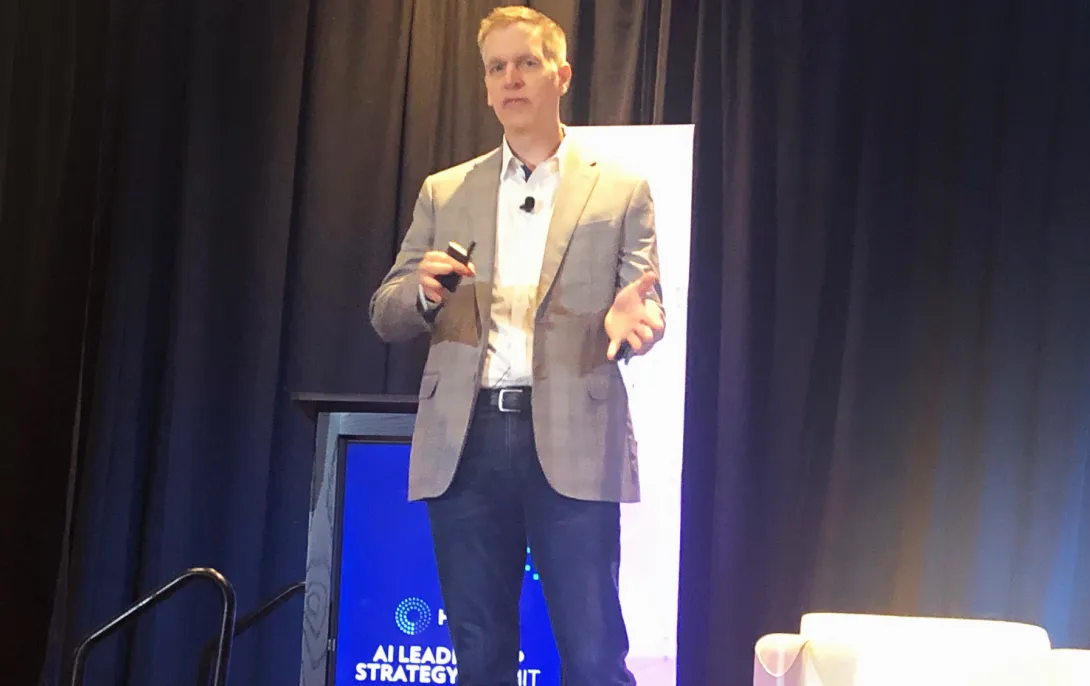
This past month, the Trump White House published its new federal AI Action Plan. Among the many provisions contained in the 28-page executive order, it had several healthcare-specific goals.
The plan, titled "Winning the Race," noted that "many of America’s most critical sectors, such as healthcare, are especially slow to adopt due to a variety of factors, including distrust or lack of understanding of the technology, a complex regulatory landscape, and a lack of clear governance and risk mitigation standards."
In order to foster a more dynamic, "try-first" AI culture nationwide, the EO calls for several key steps. Among them:
- Establish regulatory sandboxes or AI Centers of Excellence around the country where researchers, startups, and established enterprises can rapidly deploy and test AI tools while committing to open sharing of data and results. These efforts would be enabled by regulatory agencies such as the Food and Drug Administration and the Securities and Exchange Commission, with support from DOC through its AI evaluation initiatives at NIST.
- Launch several domain-specific efforts (e.g., in healthcare, energy, and agriculture), led by NIST at DOC, to convene a broad range of public, private, and academic stakeholders to accelerate the development and adoption of national standards for AI systems and to measure how much AI increases productivity at realistic tasks in those domains.
- Led by the Department of Defense in coordination with the Office of the Director of National Intelligence, regularly update joint DOD-Intelligence Community assessments of the comparative level of adoption of AI tools by the United States, its competitors, and its adversaries’ national security establishments, and establish an approach for continuous adaptation of the DOD and IC’s respective AI adoption initiatives based on these AI net assessments.
- Prioritize, collect, and distribute intelligence on foreign frontier AI projects that may have national security implications, via collaboration between the IC, the Department of Energy, CAISI at DOC, the National Security Council, and OSTP.
One of its proposed policies, for instance, is to promote development of "AI testbeds for piloting AI systems in secure, real-world settings, allowing researchers to prototype new AI systems and translate them to the market.
"Such testbeds would encourage participation by broad multistakeholder teams and span a wide variety of economic verticals touched by AI, including agriculture, transportation, and healthcare delivery."
What does the health IT industry think about all this? We heard recently from several C-suite leaders, from an array of healthcare technology companies, who offered their early reactions to the new AI Action Plan.
Kent Dicks, CEO of virtual care company Life365, said the EO offers that "clarity innovators have been waiting for," with regard to AI development.
"By streamlining infrastructure approvals and setting clear standards, it enables companies like Life365 to safely scale AI that predicts risk and keeps patients healthier at home. This roadmap positions the U.S. to lead the global market in clinically driven, export-ready healthcare AI," he said.
On the other hand, Dr. Jay Anders, chief medical officer of data analytics company Medicomp Systems, was slightly more skeptical.
"The biggest issue with this executive order is that it is broad and lacks any specific initiatives," he said. "As it pertains to healthcare, building more infrastructure has nothing to do with creating AI transparency or reliability of predictive LLMs. We need to take a hard look at how healthcare AI is trained, monitored and constrained from erroneous outputs."
Daniel Blumenthal, VP of strategy at clinical analytics firm MDClone, saw the opportunity to expand the datasets used to train healthcare AI models.
"As AI adoption accelerates under new federal priorities, it’s essential that we have large volumes of high-quality, privacy-protected patient data to responsibly power innovation in healthcare," he explained. "Synthetic data provides that capability unlike any other approach, enabling new insights and technology development."
For her part, Patty Hayward, general manager of healthcare and life sciences at Talkdesk, which develops AI-powered customer experience tools, hopes the new action plan will help "unlock and accelerate AI adoption in healthcare at a time when the industry has never needed it more."
Hospitals and health systems "face extensive financial pressures and seek ways to reduce admin waste and excess costs, while expanding access and delivering the seamless and proactive care patients deserve," she said. "Agentic AI is ready to help create the better health outcomes and financial resilience healthcare desperately needs, so it’s essential to help make adoption as efficient and safe as possible."
Robin Roberts, director of health IT regulatory affairs at PointClickCare, thought the new EO signals signal a shift toward "prioritizing meaningful technological advancement. While healthcare has unique considerations that require a measured approach in order to safeguard patient safety and privacy, it’s clear that improving patient outcomes and alleviating financial and administrative burden on healthcare providers depends upon adoption of sound AI solutions."
Added Leigh C. Burchell, VP of policy and public affairs at Altera Digital Health: "The administration’s commitment to building an innovation-friendly environment for AI while also ensuring a focus on AI’s adoptability and safety in health care is good to see. We encourage the administration to take this even one step further by partnering with Congress to establish a risk-based regulatory framework for healthcare-related AI at the federal level, because a single set of guidelines is much simpler to comply with for technologists and provider organizations than a patchwork of requirements that vary from state to state.
"No one wants to see AI development chilled because of differing state-level laws, so we hope Congress will take steps to ensure patient safety is prioritized even as innovation is protected through federal action," said Burchell.
Meanwhile, Abhi Gupta, CEO of patient enablement platform developer Fold Health, sees the federal AI Action Plan as a "pivotal moment in establishing artificial intelligence as a national strategic priority."
"For healthcare, this comprehensive approach accelerates the transition from experimental pilots to meaningful implementations at scale, particularly in critical areas like care coordination, risk adjustment, and population health management," he explained, adding that the EO's focus on compute infrastructure investments "will be especially valuable for health systems implementing large language models for clinical documentation and population health analytics, addressing longstanding bottlenecks that have limited AI adoption.
"Combined with the emphasis on deregulation and open-source model development, these changes create substantial opportunities for innovation while positioning U.S. health tech companies to scale globally and bring American healthcare innovations to international markets," said Gupta.
Mike Miliard is executive editor of Healthcare IT News
Email the writer: mmiliard@himss.org
Healthcare IT News is a HIMSS publication.


